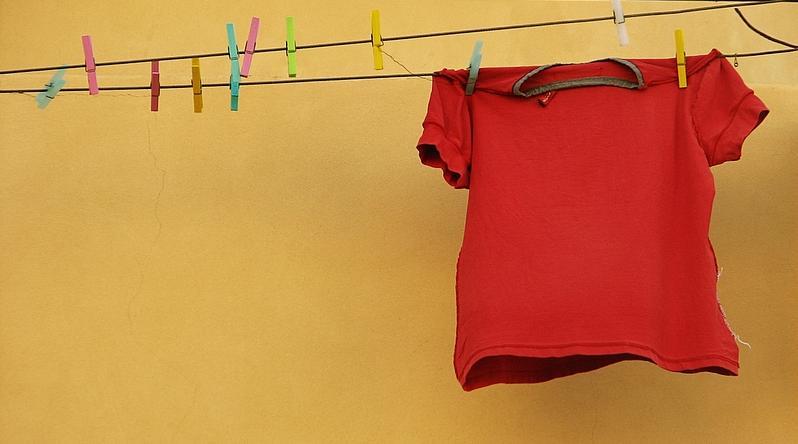Tasks: Fast fashion

The article you just read discusses only a few of the consequences of fast fashion. The videos and articles below will teach you more about what fast fashion actually is, the consequences of fast fashion, and what we need to do about it.
Set aside about an hour and go through step 1-4. Read the articles and watch the videos. Jot down a few notes along the way.
Step 1: Find out the difference between slow and fast fashion:
Link to article 'Fast Fashion vs. Slow Fashion' on the Ohio Valley Goodwill Industries webpage.
Step 2: What are some of the environmental consequences of fast fashion?
Link to article: 'How the Fast Fashion Industry Destroys the Environment', on the webpage of onegreenplanet.org.
Link to article: 'The fashion industry is the second largest polluter in the world', from sustainyourstyle.org's webpage.
Link to video on YouTube: 'Confronting High Street Shoppers with A Shocking Truth: Stacey Dooley Investigates'.
Step 3: What are some of the social consequences of fast fashion?
Link to article: 'Most of our clothes are made in places where workers’ rights are nonexistent' on sustainyourstyle.org's webpage.
Link to video on Youtube: 'Rana Plaza Collapse Documentary: The Deadly Cost of Fashion.
Link to article on influencer Gitte Mary's blog: 'FAST FASHION & SWEATSHOPS // Isn’t a poorly paid job better than no job?'
Step 4: How much do we actually have in our wardrobe?
Link to article on blog: 'Discover The Average Lifespan of Clothes and What You Keep Longest Even Though You Don’t Wear It'
Summing up:
- Was there anything that surprised or shocked you in the information you were given?
- What is the main difference between slow and fast fashion?
- How would you describe the working conditions in a sweatshop?
- What are the most serious consequences of fast fashion? Make a list.
- What can we as consumers do to change this trend? Make a list.
The first part of this activity starts at home, in your wardrobe. Do you know how many items of clothing you actually have? Go through the questions below, write down your answers, and bring them back to class.
At home:
- How many items of clothing do you have in your wardrobe in total? (Leave out socks and underwear.) 20-50 items? 50-100 items? 100-200 items? More than 200?
- Can you find any items of clothing you have never or rarely worn? Explain why you don’t wear them. (Too small, don’t like it, wrong colour, doesn’t match with anything else, out of fashion …)
- Do you have any items in your wardrobe that were not bought new? (Hand-me-downs or items from second-hand shops.)
Check the label of some of the garments:
- In which country are your clothes made?
- What materials are they made of? Natural or synthetic material?
Sum up in class:
- What was the total number of garments that you found in your closet? Compare with your classmates.
- Did you find any clothes made in Bangladesh, Vietnam, Indonesia, or China? Why is this relevant?
- Did you find any clothes made of synthetic materials, such as polyester, nylon, or acrylic? Why is this relevant?
- According to WWF, it takes about 2 700 litres of water to produce the cotton for a t-shirt. How many litres of water were necessary to produce the t-shirts that you have in your wardrobe?
- On average, a pair of jeans emits 34 kg of CO2 during the production process. How many kg of CO2 have your jeans emitted?
You are an environmental activist and would like people to change their shopping habits to help save the planet. Write a persuasive text where you explain why fast fashion is detrimental to our planet and why the industry has to change.
You are a social media influencer who realises that you buy too many clothes and that this is not sustainable. You post a text on your blog explaining your shopping habits until now and how you plan to change your lifestyle.
You work for the UN and have been given the task of writing an informative article about social conditions for textile workers in sweatshops in Bangladesh. Research the subject and write the text.
You have just cleaned out your wardrobe and are shocked by the amount of clothes you find that you never wear and that you didn’t even know you had. Write a letter to a friend describing what you have done, what you have found and what you will do with the clothes.
In this task you will find several idioms based on clothes and clothing. Are you able to place them in the correct spot? Make sure you understand the meaning of the idioms, and try to find a corresponding Norwegian expression.
Make information posters about why it is important to get as much wear out of clothes as possible. Hang the posters around the school.
Invite the pupils at your school to a swap-meet, where they can trade clothes that they don't use or are bored with.
Write a report about the process of arranging the event and about how the swap-meet went.
Relatert innhald
An article from the website The Conversation which discusses the consequences of fast fashion.